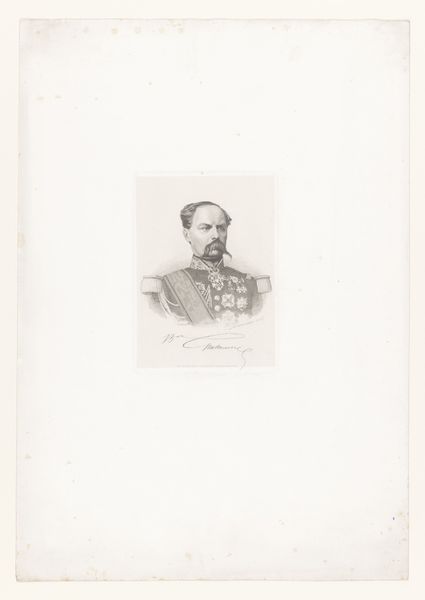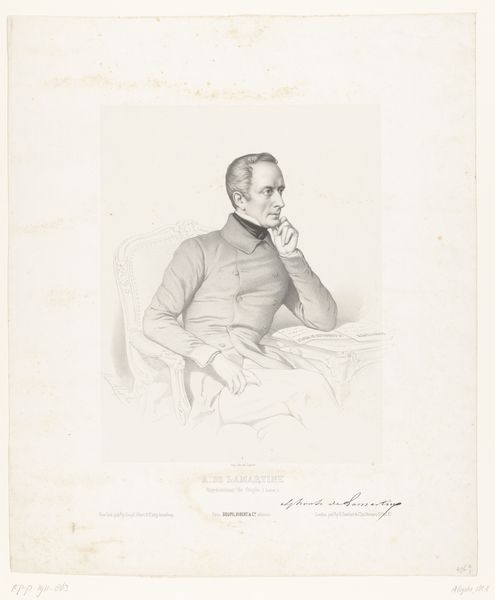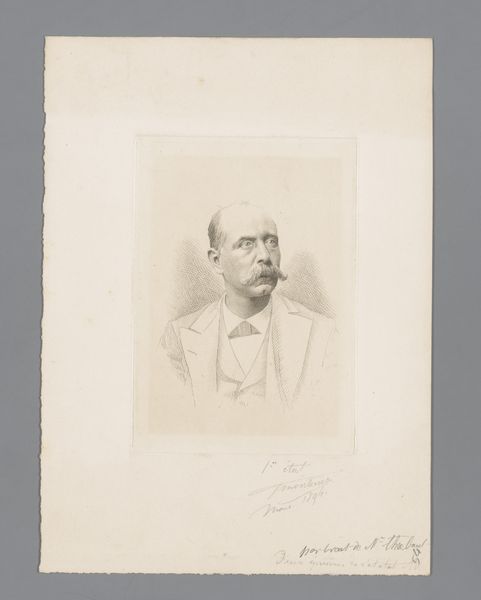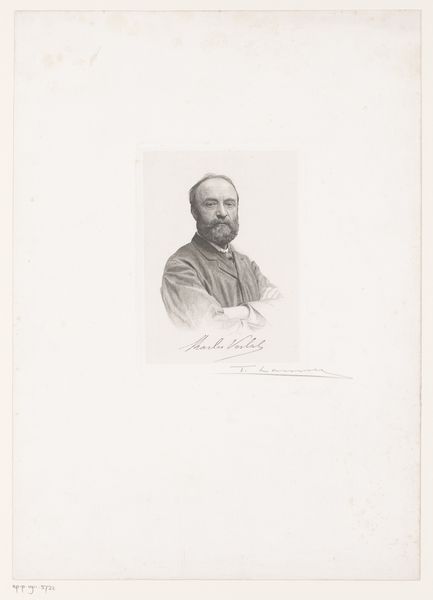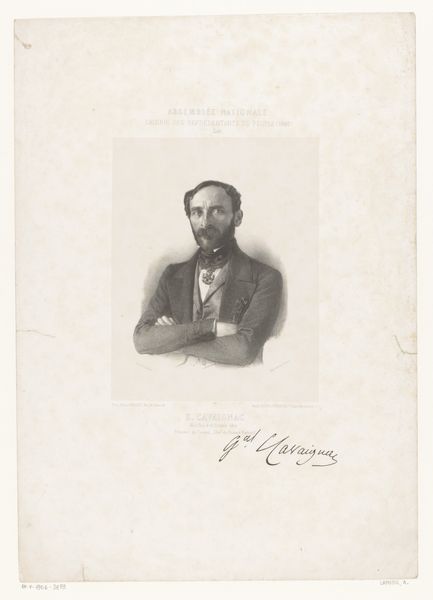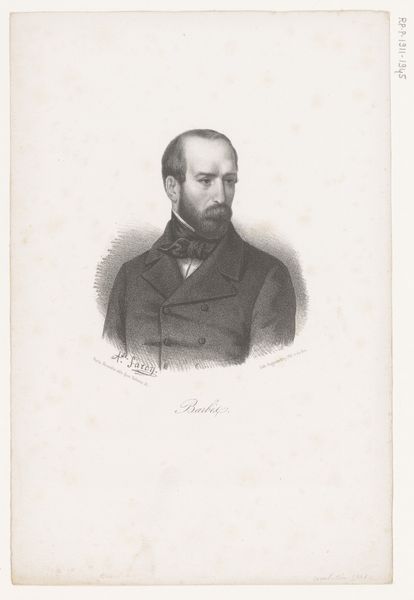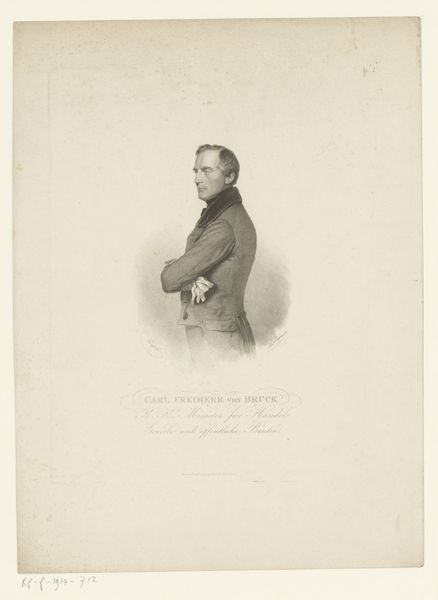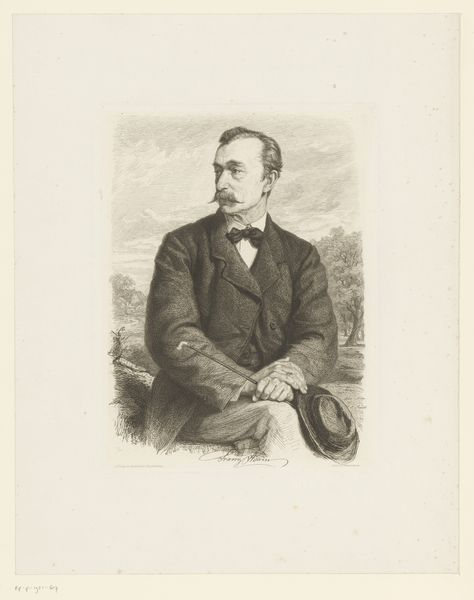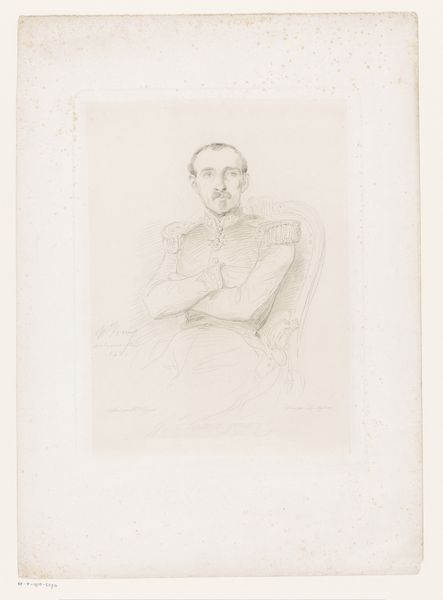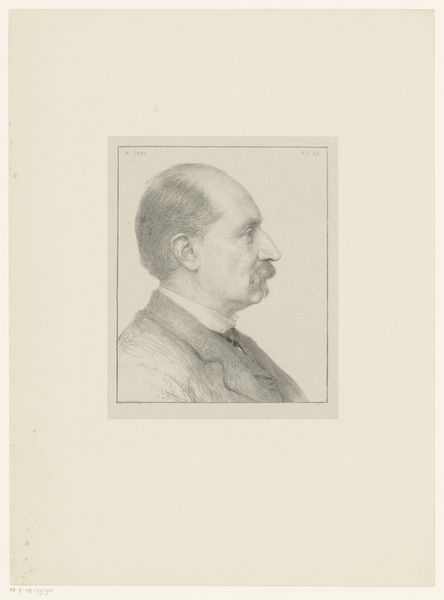
print, engraving
#
portrait
# print
#
pencil drawing
#
history-painting
#
academic-art
#
engraving
#
realism
Dimensions: height 540 mm, width 381 mm
Copyright: Rijks Museum: Open Domain
Curator: Let's consider this print from 1859, currently residing in the Rijksmuseum: a portrait of the painter Horace Vernet by Marie-Alexandre Alophe. It's an engraving. Editor: The first thing that strikes me is how self-assured he looks. The crossed arms, the upward gaze... it all exudes confidence and a bit of detachment, even boredom, perhaps. Curator: Indeed. Vernet was an immensely popular and influential painter, particularly known for his depictions of French military campaigns. It’s crucial to remember that the 19th century saw a real boom in celebrity culture, with artists gaining prominence in the public sphere. Portraits like these became crucial ways of shaping public perception. Editor: It's fascinating how his personal brand as it were, becomes intertwined with French nationalism. The crossed arms maybe can also be read as defiance. Looking at his mustache and stern look now, there is almost a resistance radiating from this portrait. Curator: That’s a very insightful reading. Remember Vernet wasn’t just an artist; he was also a staunch Bonapartist. So, the perceived defiance could be read in relation to the complex political landscape of the time, specifically in how visual rhetoric communicated ideals related to French imperialism. Editor: Right. It also makes me think about the romanticization of war and military power so prevalent in that era. And Alophe is making it look easy. The fine lines of the engraving create such soft shadowing... Curator: Yes, and Alophe, though perhaps lesser-known today, was a prominent portraitist and photographer. Prints like these had wide circulation, and helped consolidate artists' images across different societal strata. Also, the academic approach and realism style contribute to the work's seriousness of intention. Editor: It all comes back to how an artist positions themselves – how they navigate public life, and how others shape their narrative through artistic renderings like this. So much intentionality must have played into this image. Curator: Exactly. Vernet's place within French cultural history, and this portrait’s role in solidifying that status, reveals just how interconnected art, politics, and personal image truly were in 19th century France. Editor: Well, now I’ll certainly view other 19th-century portraits with fresh eyes. This discussion has really shown how appearances can shape so much of what we think of as collective history and even, personal character.
Comments
No comments
Be the first to comment and join the conversation on the ultimate creative platform.
